Other Datatypes
Checkbox
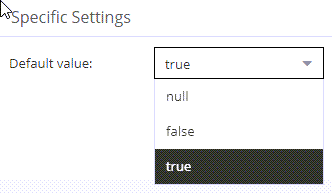
A checkbox field can be configured to be checked by default when a new object is created.
It is stored in a TINYINT column in the database with the value 0 or 1.
In order to set a checkbox value, a bool value needs to be passed to the according setter of the object:
$object->setCheckbox(true);
Boolean Select
A Boolean Select is kind of a tri-state checkbox which is rendered as a select datatype in the admin UI.
The background is that a checkbox can only have two states. This is especially important when it comes to inheritance.
A checkbox treats an empty (never set) value just like the unchecked value. The consequence is then as soon as a parent sets it checked you can not reset it to unchecked in the child nodes anymore.
The boolean select takes care of this problem by introducing a third state. The storage values are -1 (for unchecked), 1 (for checked and
null for empty.
For the admin UI you can specify the display values according to your needs. Default values are yes, no and empty.
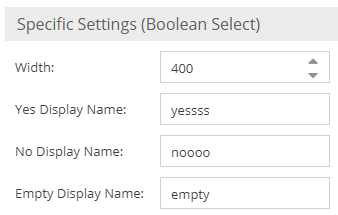
Link
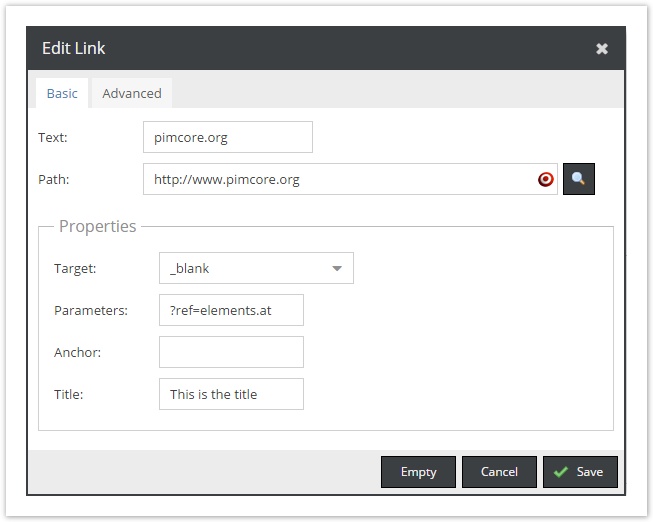
In the UI a link is displayed as text. Its details can be edited by clicking on the button next to the link text. In the object class definition there are no special configurations available for an object field link.
The link object field has its own data class which is Pimcore\Model\DataObject\Data\Link. In order to set a link
programmatically an Pimcore\Model\DataObject\Data\Link object needs to be instantiated and passed to the setter:
$l = new DataObject\Data\Link();
$l->setPath("http://www.pimcore.org");
$l->setText("pimcore.org");
$l->setTitle("Visit pimcore.org");
$object->setLink($l);
In the database the link is stored in a TEXT column which holds the serialized data of an Pimcore\Model\DataObject\Data\Link.
In the frontend (template) you can use the following code to the the html for the link.
<?php
$object = DataObject::getById(234);
?>
<ul>
<li><?= $object->getMyLink()->getHtml(); ?></li>
</ul>
Link Generators
Please also see the section about Link Generators
RGBA Color
Allows to store RGBA Values. RGB and Alpha values are stored as hex values in two separate columns as hex values in the database.
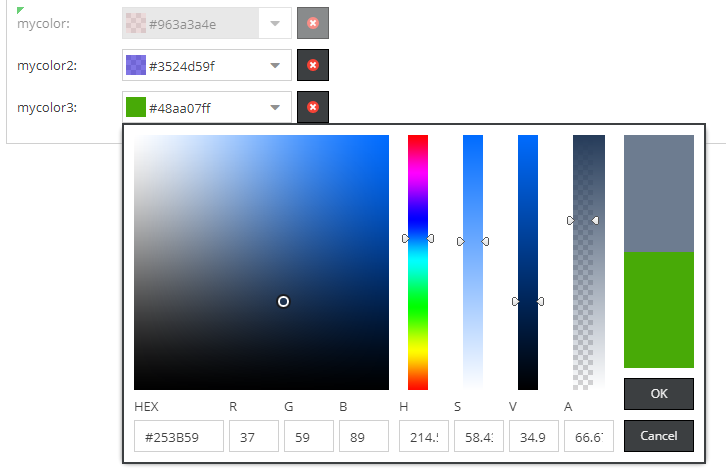
API Examples:
$o = \Pimcore\Model\DataObject\User::getById(50);
// get the color, can be null!
$color = $o->getMyColor();
// get the RGB part as hex with leading #
var_dump($color->getHex());
// get the RGBA value (with alpha component) has without leading hash
var_dump($color->getHex(true, false));
// get the RGBA value as array (R,G,B 0-255, Alpha 0-1)
var_dump($color->getCssRgba(true, true));
// set the RGBA value
$color->setRgba(0, 0, 255, 64);
Encrypted Field
Offers data encryption for certain data types.
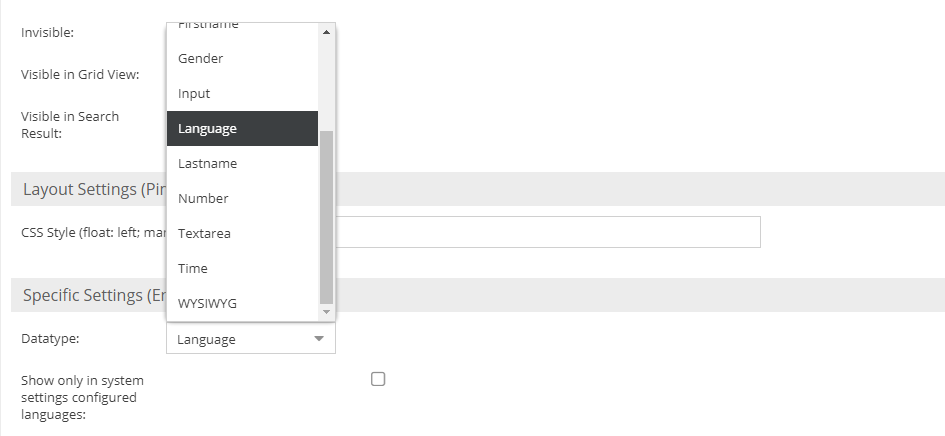
Prerequisites: generate a secret key by calling vendor/bin/generate-defuse-key and add it to app/config/config.yml
Example:
pimcore:
encryption:
secret: def00000fc1e34a17a03e2ef85329325b0736a5941633f8062f6b0a1a20f416751af119256bea0abf83ac33ef656b3fff087e1ce71fa6b8810d7f854fe2781f3fe4507f6
Key generation:

Strict Mode
In strict mode (which is the default) an exception is thrown if existing data cannot be decrypted (e.g. because of a key change). You can switch this off by calling
Pimcore\Model\DataObject\ClassDefinition\Data\EncryptedField::setStrictMode(false)
URL Slug (experimental)
This feature is experimental!
Subject to change with short notice in upgrade notes
A slug is the part of a URL which identifies a particular page on a website in an easy to read form. In other words, it’s the part of the URL that explains the page’s content. For example, the URL is https://demo.pimcore.fun/slug, and the slug simply is ‘/slug’.

Note that currently URL slugs are not supported inside Blocks & Classification Store.
This data-type can be used to manage custom URL slugs for data objects, you can add as many fields of this type to a class as you want. Pimcore then cares automatically about the routing and calls the configured controller/action if a slug matches.
Example
<?php
namespace AppBundle\Controller;
use Pimcore\Controller\FrontendController;
use Pimcore\Model\DataObject;
use Symfony\Component\HttpFoundation\Request;
class ExampleController extends FrontendController
{
public function mySlugAction(Request $request, DataObject\Foo $object, DataObject\Data\UrlSlug $urlSlug) {
// we use param converters to the the matched data object ($object)
// $urlSlug contains the context information of the slug
return [
'news' => $object
];
}
}